Tōkyō Trams
Most of Tōkyō’s rail systems are “heavy rail”: subways or commuter/freight rail systems. There used to be more local light-rail lines, commonly called streetcars or trolleys in U.S. English, or to use the term more common in international English: trams. These have largely been replaced with heavy-rail systems or otherwise eliminated. Two remain in Tokyo: the Tōkyū Corporation’s Tōkyū Setagaya Line in Setagaya ward on the south-west side of Tōkyō, and the Tōkyō Metropolitan Bureau of Transportation (aka Toei)’s Toden Arakawa Line, which runs through several wards (Shinjuku, Toshima, Kita and Arakawa) on the north-west side of Tōkyō.
Both of these lines use an unusual rail gauge of 1,372 mm (4’ 6”), rather than the more common 1,067 mm (3’ 6”), and have 600 volt DC overhead power rather than 1,500 volt DC. This doesn’t matter since both are separate from other lines anyway, and use very different rolling stock than the usual electric-multiple-unit (EMU) trains. Both do use pantographs rather than trolley poles, which is typical of all but “historic” light-rail vehicles these days (although some other Japanese tram systems do still use older equipment with trolley poles).
Both lines are also largely on dedicated double-track right-of-way rather than in-street tracks and use platforms at stations, so they are closer to heavier railways than to streetcars, except for their low speed and frequent stops. The Toden Arakawa line does include some street running, just south of JR’s Ōji Station and it’s own Ōji Eki-mae Station, along Meiji Dori (Meiji Avenue), but this is very short. Most stations are also unstaffed, with payment made on the tram.
The Tōkyū Setagaya Line extends 5.5 kilometers on private double-track right-of-way, between stations connecting to the Tōkyū Den-en-toshi Line (at Sangen-Jaya) and the Keio Corporation’s Keiō Line (at Shimo-Takaido). Current rolling stock is the articulated 300 series tram, with a max speed of 40 kph and an average speed (including stops) of 22 kph.
The Toden Arakawa Line extends 12 kilometers with thirty stations on a double-track line, largely on private right of way. It has connections to several Tokyo Metro subway lines, the JR East Yamanote and Keihin-Tōhoku lines, and the Keisei Electric Railway Company’s Keisei Main Line. Current rolling stock consists of several models of single-car trains, including the 8500 series, operating at an average speed (including stops) of 15 kph.
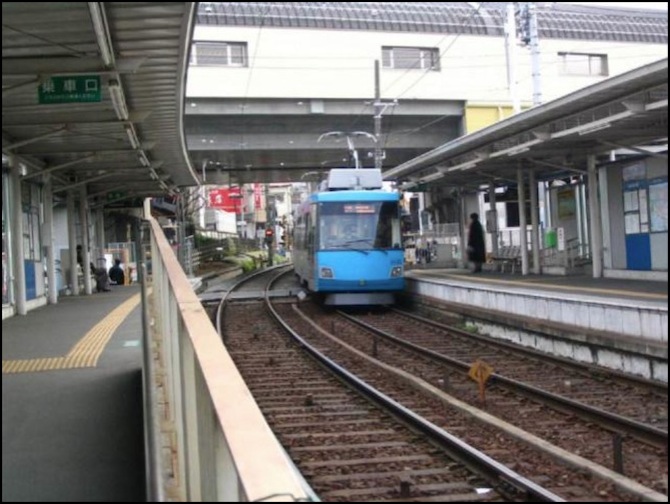
Yamashita Station on the Tōkyū Setagaya Line (2005)
Photographer: Sphl
The right of way is entirely double-track, and mostly built on private right-of-way using wooden ties and modern concrete poles holding up the catenary. The right-of-way is typically at street level, and unfenced. As can be seen below, the ballast is old enough to be rust-red rather than gray, and in places grass is growing through it.
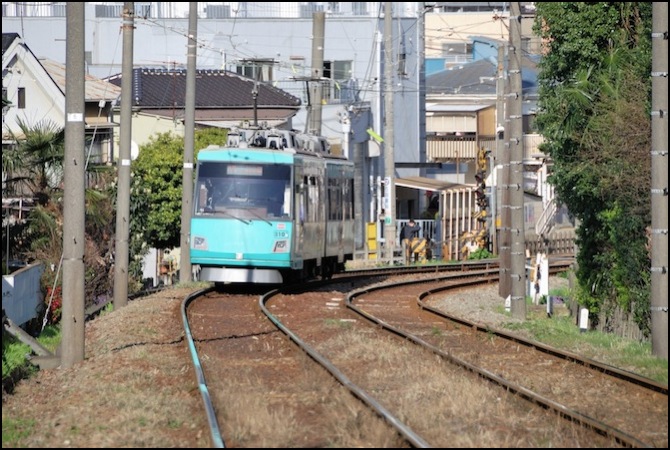
Tōkyū Setagaya 300-series Tram (2009)
Source: Flickr, Photographer: ykanazawa1999
The Toden Arakawa line is similar to the Setagaya line, with private right of way, although it does have a short section of street-track. It also uses high-platform trams, although in single-car rather than articulated models.
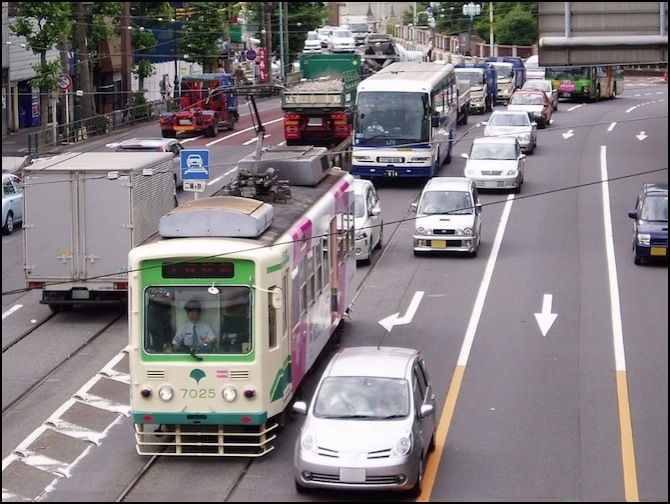
Toden Arakawa 7000 series Tram street-running (2007)
Source: Wikipedia Japan, Photographer: Cassiopeia Sweet
The Arakawa line has recently added more modern-looking trams.
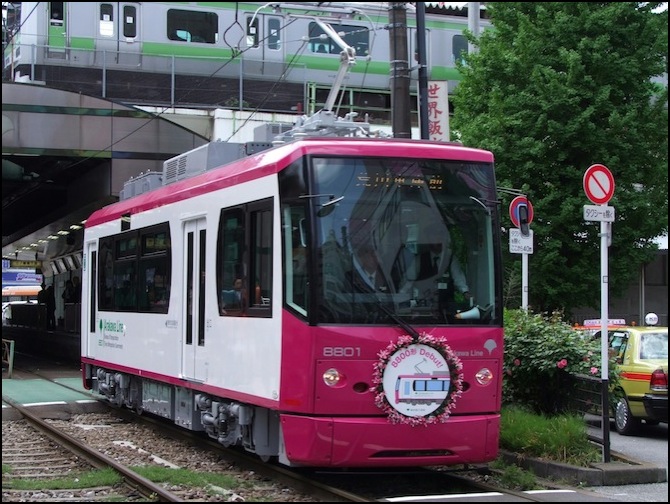
Toden Arakawa 8800 Tram beneath the Yamanote line at Ōtsuka Station (2009)
Source: Wikipedia Japan, Photographer: E56-129
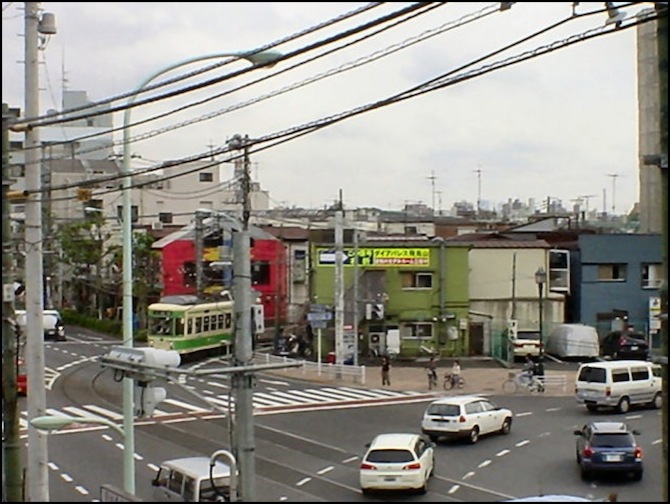
Toden Arakawa tram street-running at Asukayama (2006)
Source: Flickr, Photographer: Tata_aka_T




